| FRONT |
BACK |
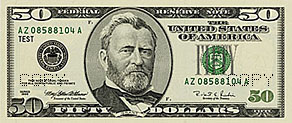 |
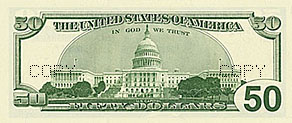 |
| The newest version of the $50 bill. The $50 bill was redesigned to prevent
counterfeiting. |
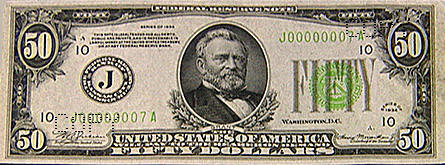 |
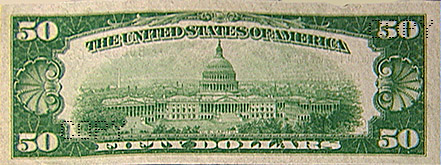 |
The previous "Green Seal" version of the $50 bill has been in use since 1929. |
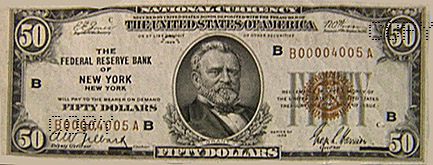 |
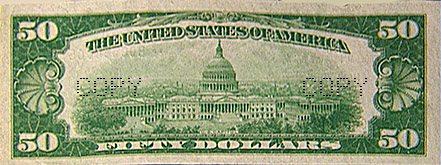 |
The "Brown Seal" version of the $50 (1929) says "fifty dollars," but
is equivalent to a $350 dollar bill in terms of purchasing power. |
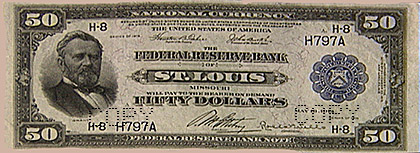 |
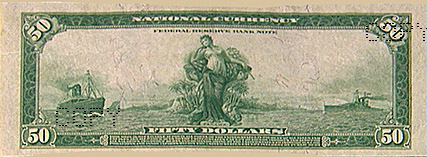 |
Unlike the current $50 bill, the "Blue Seal" Federal Reserve Banknote (1918)
could be exchanged for gold. The Federal Reserve kept gold reserves equivalent to 40% of the
value of all Federal Reserve notes issued. |
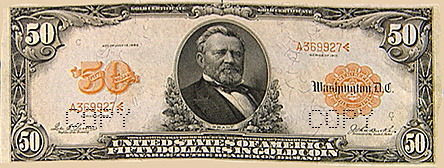 |
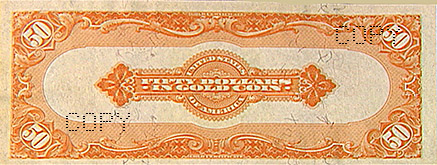 |
"Gold Certificates" issued during the period 1913-1922. |
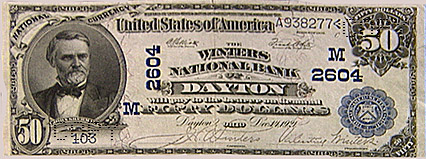 |
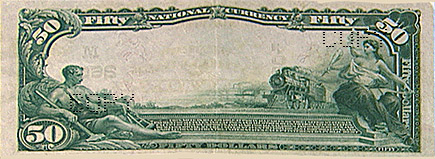 |
"National Bank Notes" (1902). |
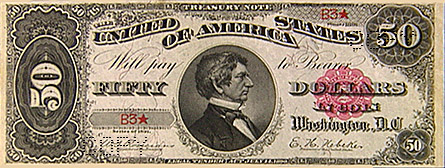 |
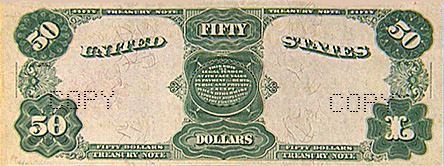 |
"Red Seal" Treasury or coin notes (1891). |
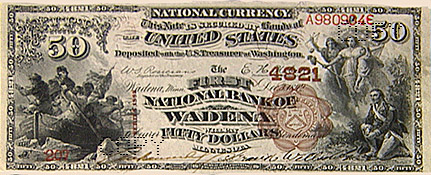 |
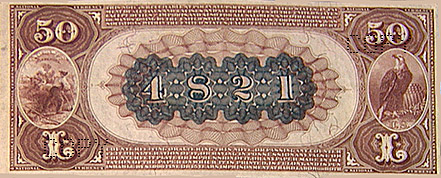 |
"Gold Certificates" (1882), could be converted into gold on demand. |
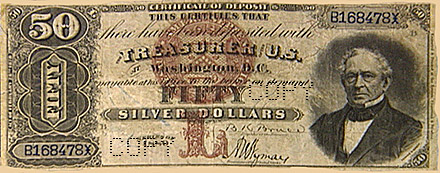 |
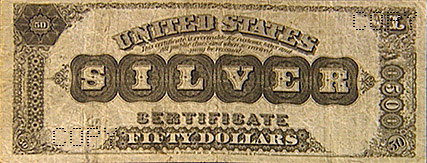 |
"Brown Seal" Silver Certificates (1878). Some US currencies could be exchanged for
silver rather than gold. What other types of commodities could a country offer to exchange for paper
money? |
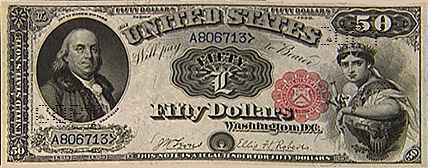 |
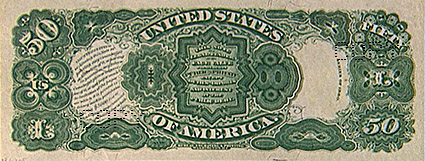 |
United States Notes (1874) |
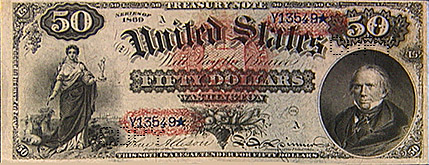 |
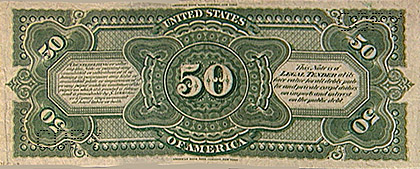 |
"Red Seal" United States Notes (1869). Many countries frequently change currency.
In fact, issuing different currency happened often in the US before the Great Depression. Why would a
country issue a new currency? |
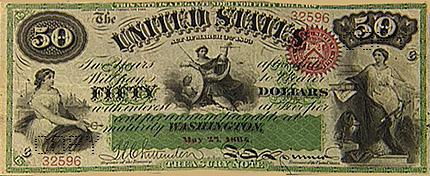 |
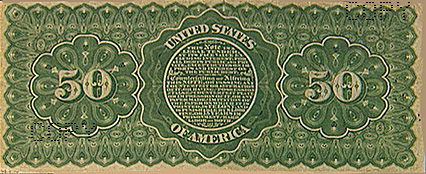 |
Interest Bearing Notes (1863). In the past, people often used stocks and bonds
and other interest bearing assets as money. How does interest bearing money compare with money
that can be exchanged for gold or silver? |
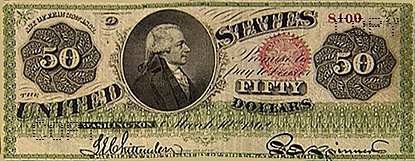 |
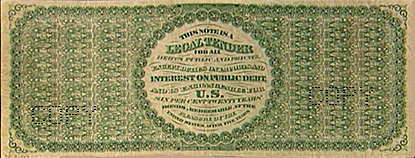 |
United States Notes (1862). |

























